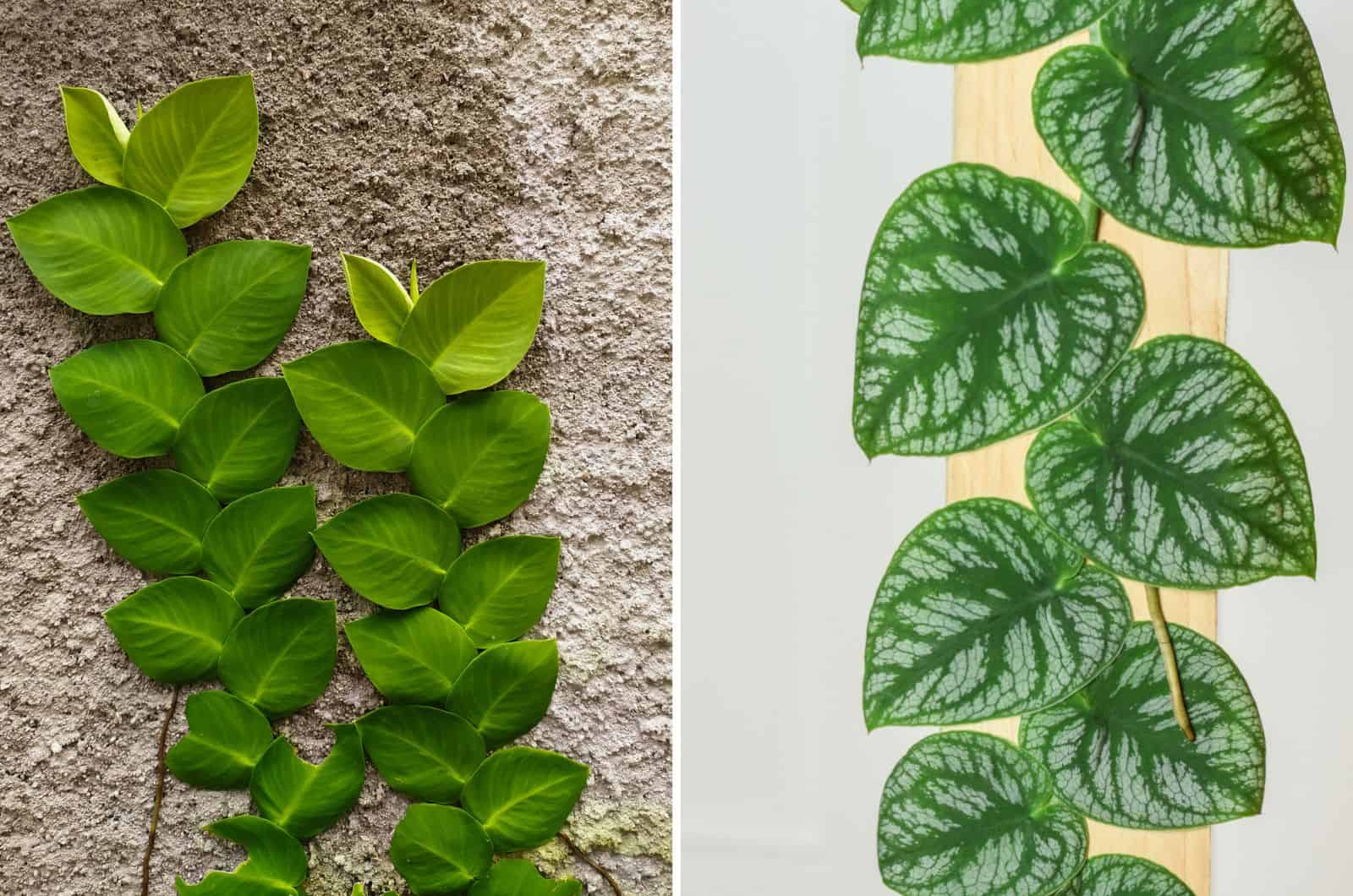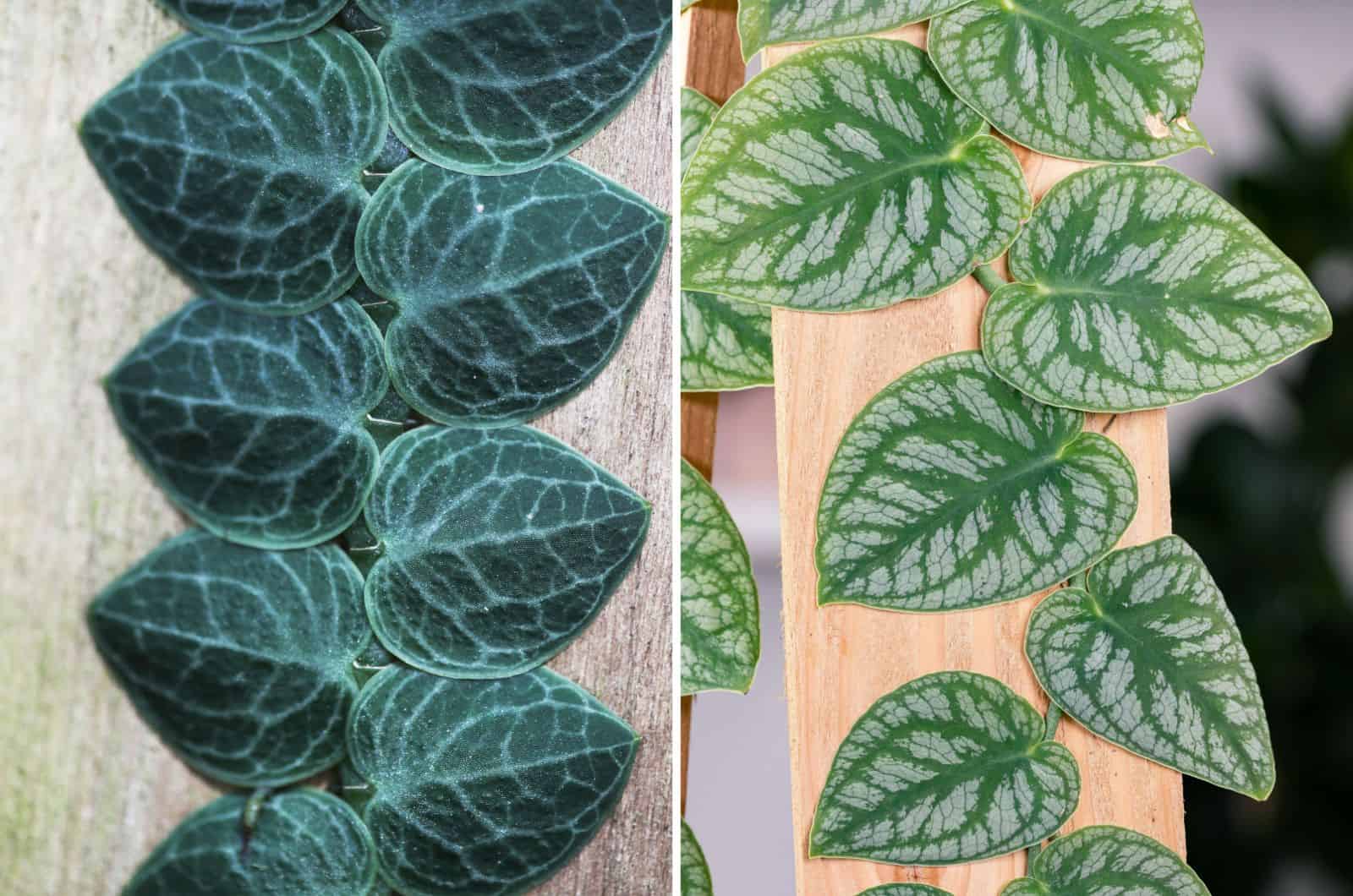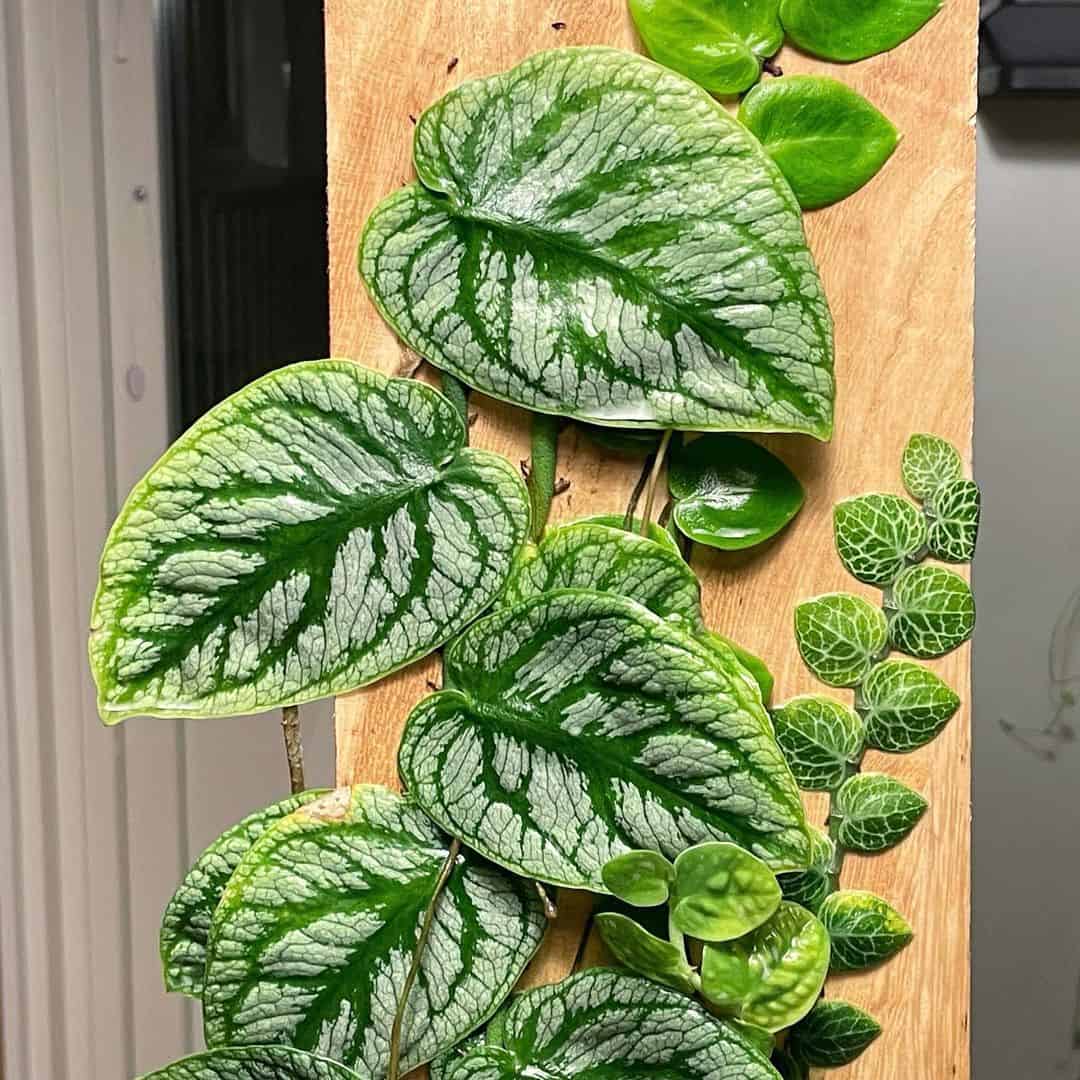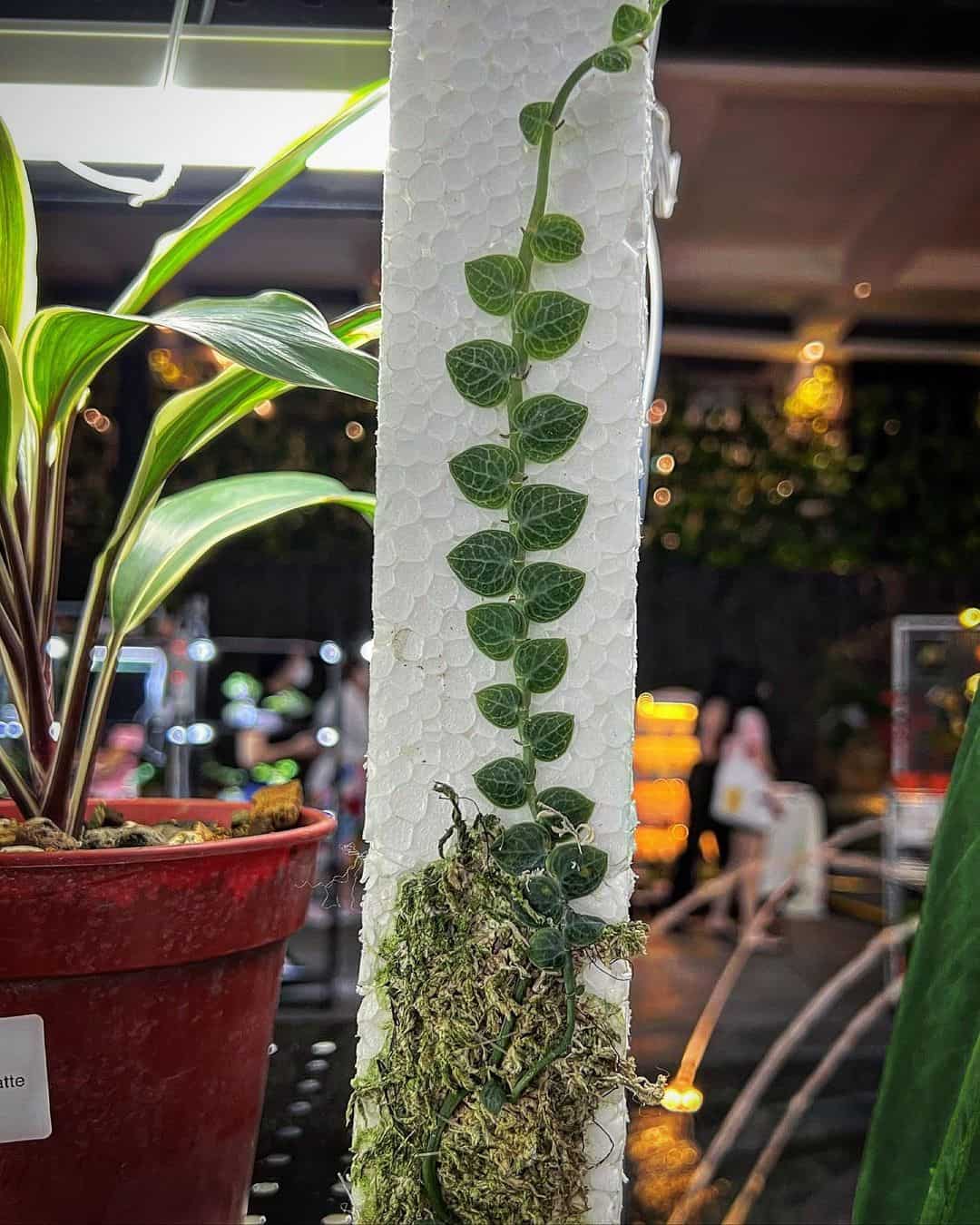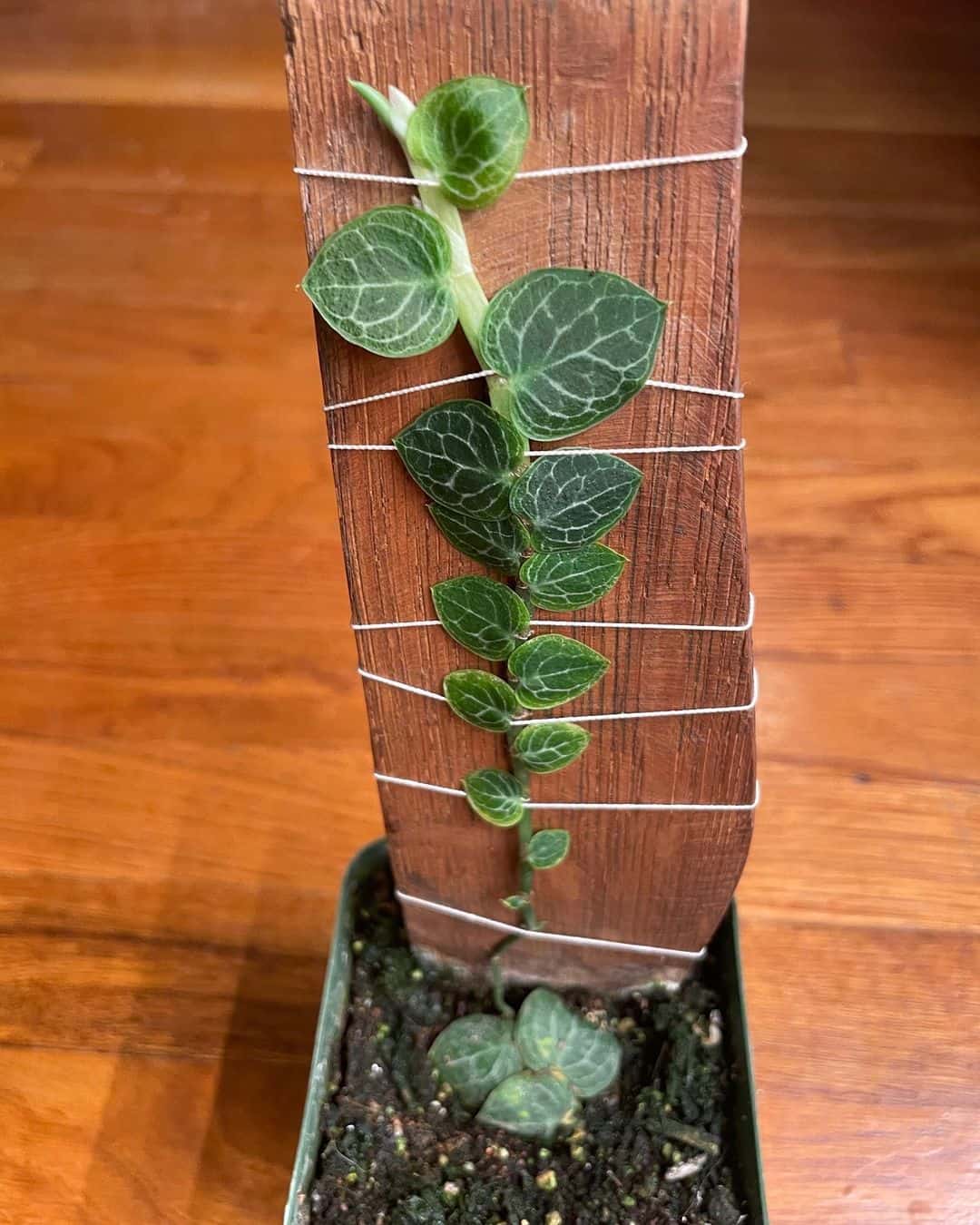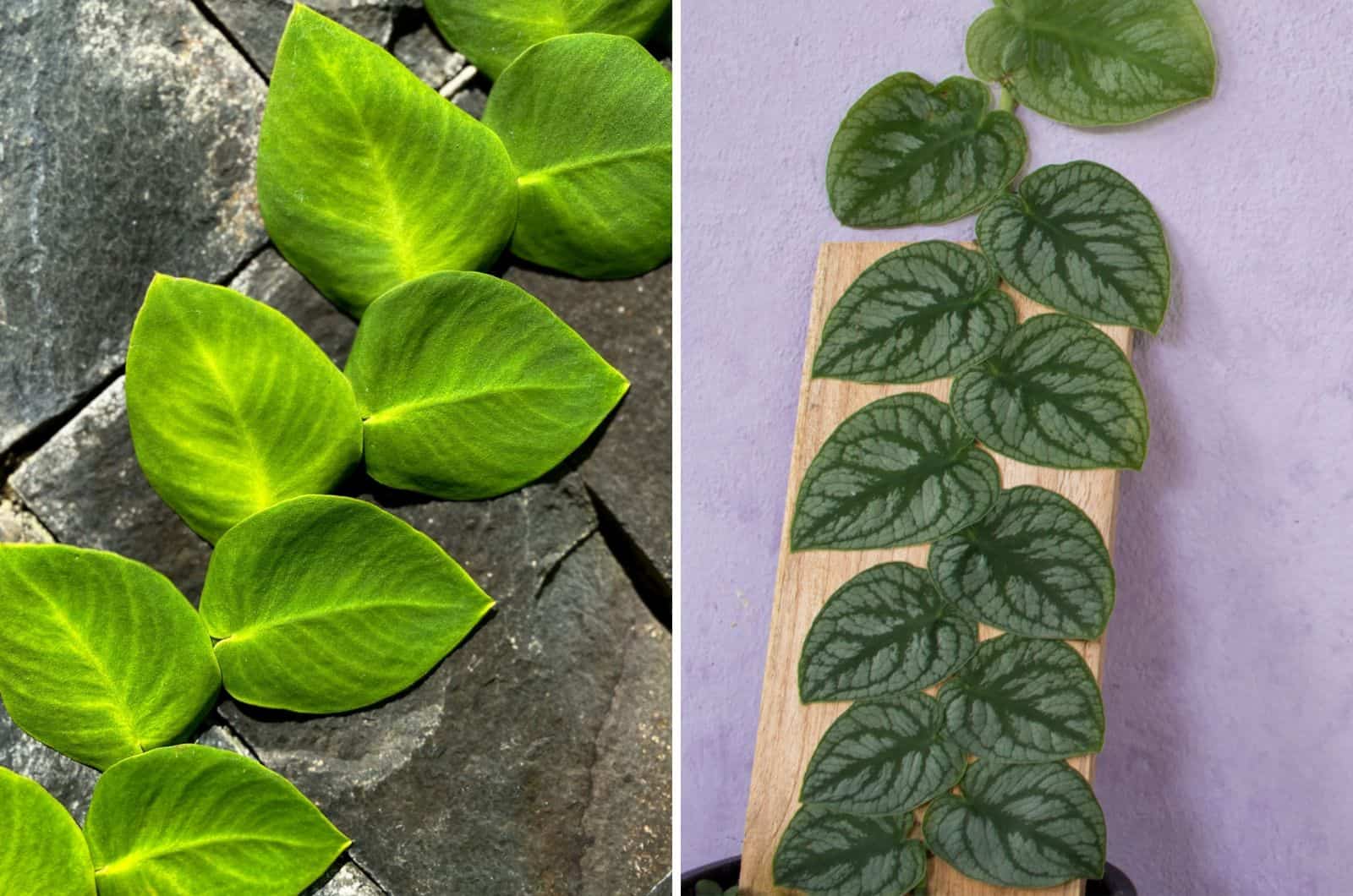Both the Monstera and Rhaphidophora are popular houseplants that originate from tropical regions. They both belong to the Araceae family; however, their similarities don’t stop there. It is often quite difficult to differentiate between these two plants, especially when they are still relatively young.
Luckily, we are here to tell you all the info you need to know about Monstera Dubia vs Rhaphidophora Cryptantha!
They are both lovely plants that are pretty easy to take care of, which is why you can spot them in many households. Keep reading to find out their differences and similarities, as well as how to take care of them.
Monstera Dubia Vs Rhaphidophora Cryptantha: Differences & Similarities
Both of these aroids are relatively rare plants that you won’t be able to find in your local garden shop. However, if you manage to get ahold of either an M. Dubia or R. Cryptantha, it is important to know what kind of plant you are dealing with.
It is hard to tell the difference when they are both in the juvenile stage. However, once they start maturing, these plants significantly differ from one another.
Here are their key differences and similarities.
Natural Habitat
Even though they are both tropical plants, they can be naturally found in completely different places. For instance, the Monstera Dubia can be found in Central and South America, while the Rhaphidophora Cryptantha is usually seen in tropical regions of Africa and Southeast Asia.
Today, the R. Cryptantha can also be found in places like Bali, New Zealand, Australia, and Thailand.
Growth Habits
Both plants are creeping vines — they like to climb on stuff! In deep rainforests, they like to climb along tree trunks with the help of their aerial roots. Due to their unique growth habits, both plants are referred to as shingling plants.
When grown indoors, you will have to provide these plants with some type of support. They also look great in hanging baskets and terrariums. My Monstera Friedrichsthalii looks absolutely amazing hanging from its basket with its long vines swaying in the air.
Leaves
As I said before, these two plant species look astonishingly similar when they are in their juvenile form. This specifically refers to the M. Dubia, as it significantly changes when it starts growing.
The juvenile leaves of M. Dubia are light to dark green, heart-shaped, and have silvery variegations along the surface. They also have dark green veins. As they grow, the leaves get darker and darker. The Mature Monstera Dubia also develops fenestrations, which is a common feature of Monstera plants.
When the R. Cryptantha is in its juvenile state, it produces small, flat, green leaves with light green veins. As the plant grows, the leaves overlap and they look like they have been painted.
The leaves of the R. Cryptantha also have silvery variegations, while the M. Dubia produces leaves with shimmery variegations along the veins.
Roots
These two juvenile plants also have similar root systems. However, it seems as though their nutrient uptake differs.
Although they are both relatively slow-growing plants, the Rhaphidophora grows faster than the Monstera, which is why these plants will reach maturity first.
Monstera Dubia Vs Rhaphidophora Cryptantha: Plant Care
They are both tropical plants that originate from regions with a similar environment, so their growing conditions are also quite similar. You can use the Monstera Dubia care guide for the Rhaphidophora Cryptantha, and vice versa.
I have also added some tips regarding both plants specifically, though you can ultimately use them for different plants as well. I have been using the same care guide for my Monstera Deliciosa and Monstera Adansonii varieties, and they are still growing and thriving!
Here is some of the general info:
[table id=629 /]
Now, let’s take a closer look.
Soil Requirements
The majority of tropical native plants require soil that is porous and well-draining. In order to prevent waterlogging and provide the roots with the ideal amount of oxygen, make the perfect soil mixture.
The top materials for their soil are listed below:
• Sphagnum moss or peat moss
• Pumice or perlite
• Orchid bark
Perlite must be used in every type of soil, in my opinion, as it improves drainage and prevents overwatering. This is especially important because you will have to constantly provide moist soil for your plants.
Additionally, drainage holes help to remove surplus moisture that would otherwise stay in the soil and attract various insects and fungi.
For a Rhaphidophora, the optimal soil pH varies from 6.0 to 6.5, while the Monstera Dubia thrives in soil with pH levels ranging from 5.5 to 7. You can buy a soil test in case you are not sure what the pH of your potting soil is.
I used Monstera potting soil for my Rhaphidophora Korthalsii once, and there were no issues.
Light Requirements
Both M. Dubia and R. Cryptantha plants would suffer severe consequences from inadequate lighting conditions. Bright, medium indirect light is the ideal type of lighting for these plants.
This is because the plant’s interesting leaves will suffer if they receive too much direct sunshine. If they continue to be exposed to excessive direct light, they will scorch, curl, and begin to droop or wilt. Sadly, if your plant is exposed to direct sunlight for an extended period of time, it could end up perishing.
However, you also don’t want to leave it in dim light either. Light is essential for the leaves’ healthy growth and color maintenance. Inadequate lighting is one of the main reasons Monstera leaves turn yellow.
The optimal placement for these plants would be close to an east or west-facing window so that they can get adequate direct morning light.
The light will be indirect for the remainder of the day, which is ideal for growth.
Because of the strong sunlight, I avoid placing my tropical houseplants close to windows that face south. If you are unable to choose another location, simply cover the window with protection, such as sheer curtains.
Finally, if your only available window is one facing north, I suggest investing in grow lights.
Water Requirements
Watering is one of the most difficult aspects of taking care of these plants. Being a tropical plant, it makes sense that it would have high watering requirements.
It’s actually quite the contrary, though. The finest example of how indoor plant care needs to be adapted is with watering.
The frequency of watering is actually influenced by numerous things. For instance, the watering requirements of a tropical plant are considerably increased by high temperatures, high humidity, and lots of sunshine.
As a result, you should water your Rhaphidophora or Monstera more frequently in the summer. As the growing season ends and these plants enter the dormancy stage, the amount of watering required will reduce.
You must establish a flawless watering schedule because you are the only source of water for your plants.
When the top two inches of the soil of your Rhaphidophora or Monstera plant become dry, I advise watering it.
To determine the amount of moisture in the soil, stick your finger in, look at the color of the soil, or use a moisture meter.
The best approach to prevent both overwatering and underwatering is to use these methods. Remember that each of these conditions has the potential to be fatal, so understanding the watering requirements is crucial.
Humidity Requirements
Most tropical plants need high humidity levels to grow and thrive. This is because tropical regions are pretty humid. Rhaphidophora and Monstera plants grow in high-humidity environments in their natural habitat, which is a rather straightforward explanation.
This means that your shingle plants won’t thrive in a home with normal levels of humidity.
I always keep the humidity over 60%, and it works wonderfully.
Many novice growers struggle to maintain high humidity levels, but experts are aware of what to do!
I’ll demonstrate five excellent techniques for increasing humidity levels to promote healthy growth for your shingle plants.
Let’s get started!
Create A Pebble Tray
Creating a pebble tray is a low-cost and effective method for increasing humidity indoors.
All you will need is a shallow dish and a few pebbles; pebbles look lovely, so using this technique will make your shingle plant look even more lovely – if that’s even possible!
Many beginner gardeners wonder whether pebble trays genuinely increase humidity. I advise mixing a humidity tray with other techniques, such as misting.
Misting The Plants
Misting is a conventional method for raising humidity levels. This approach will be quite effective if you have a lot of free time.
Misting is a poor option for growers with limited time because your Rhaphidophora will need to be misted several times every day.
This is due to the fact that the humidity levels will drop because of the quick evaporation of the moisture provided by misting.
If you can only mist your Rhaphidophora once per day, I suggest combining this technique with one of the do-it-yourself approaches in this section.
Invest In A Humidifier
Some growers prefer the simpler approach to DIY projects, but taking “the easy way out” frequently results in higher prices.
Humidifiers can be quite expensive; however, it’s the best option if you want to increase humidity without worrying.
If you cultivate a lot of plants indoors, especially if they are from tropical locations, I highly advise getting one for your plant. You can find them on Etsy or Amazon.
Group Your Plants
Making a microclimate wins the prize for raising humidity the quickest!
Initially, I was put off by this concept because I believed it to be a unique biological and chemical process.
In actuality, it only refers to grouping your indoor plants. If you grow other Rhaphidophora genus plants, such as a Rhaphidophora Hayi or Rhaphidophora Foraminifera, adjacent to your plant, they will share moisture through a process known as transpiration. The same thing applies to your Monstera plants.
Additionally, placing Scindapsus, Hoya, or Epipremnum plants close to your shingle plant will help those species as well.
Grow A Terrarium
Your shingle plant can be grown in a terrarium or vivarium.
Larger plants, like Monsteras and Rhaphidophoras, do well in terrariums despite the fact that these containers are typically used for smaller plants.
Although these plants are enormous, you can prune them to keep them at the correct size.
Read also: How To Create A Succulent Terrarium: Step-by-step Guide
Temperature Requirements
Although these plants are native to tropical climates, cultivating them indoors doesn’t require extremely hot conditions.
Just make an effort to keep the temperature at or above 65 degrees. Additionally, keep in mind that your plants can suffer damage at temperatures higher than 80 degrees Fahrenheit.
To be safe, I’d keep it somewhere in a temperature range of 65 to 75 degrees Fahrenheit.
Your Dubia won’t suffer from higher temperatures as long as you keep it well-hydrated.
If you grow a Monstera Dubia outside, bring it inside when the temperature drops below 50 degrees Fahrenheit since it cannot tolerate frost.
Keep the plants away from vents, radiators, cold drafts, and fireplaces.
Fertilizing Requirements
During the growing season, your tropical plants will require a boost, so I advise feeding it at least once a month.
For your shingle plants, the following fertilizer would be ideal:
• Balanced
• All-purpose
• Liquid
I suggest diluting the fertilizer to half strength in order to prevent fertilizer burn, regardless of the fertilizer brand or NPK ratio. Avoid fertilizing the plants during their dormancy stage, as they don’t need plant food during this period.
Repotting
These plants have moderate growth, which means that you will have to repot them every other growing season or when they are rootbound. Stunted growth and roots coming out of the drainage holes are often a sign that your plant needs repotting.
When repotting, get a pot that is two inches larger than the current one and use fresh soil. Always check the roots for root rot, and trim off any brown and mushy roots.
Here are step-by-step instructions for repotting:
1. Tip the pot to one side and lightly tap on it to make it simpler for your plant to come out. Carefully remove the plant from the pot by turning it over.
2. Remove extra soil surrounding the root system so you can examine the condition of each root. Use sterile cutting tools to remove any roots that are damaged.
3. Fill a fresh pot with soil mixture; a half-full pot ought to do. Don’t forget to move the moss pole along with your plant when you transplant it to a new container.
4. Increase the amount of growing medium, and compact it close to the plant’s base.
5. Water your replanted plant to make it more adaptable to its new environment.
Read also: Detailed Step By Step Guide To Repotting Monstera Plants
Propagation
Rhaphidophora Cryptantha and Monstera Dubia propagations are relatively similar. These plants are easily propagated by stem cuttings. Let’s look at how to choose the best stem cutting and propagate it.
How To Choose A Stem Cutting
Get yourself a pair of clean, well-kept gardening shears or scissors.
Additionally, you’ll need to prepare potting soil, a rooting hormone, a plastic bag, and a clear vase or jar (for water propagation).
To take stem cuttings, follow these 4 simple steps:
1. Pick a stem with at least two nodes that is healthy (the more, the better).
2. Snip the stem just below the lower node with your shears.
3. If your cutting has any lower leaves, remove them because they shouldn’t be in the rooting media.
4. Dip the cut end in a rooting hormone, and be sure to cover any node that will extend below the soil/water line with the hormone.
The cuttings must now be rooted!
Stem Cuttings In Water
Water propagation is one of the easiest methods for propagating plants. If you are a beginner gardener, I would suggest you use this method.
Here’s how you do it:
1. Pour fresh, lukewarm water into the appropriate container.
2. Put the cut end into the water. Ensure that all of the leaves are above, and that the node is below the water’s surface.
3. Put the container with the cutting in an area with strong indirect light.
4. You should change the water once every other day.
5. You can transplant the cutting into the soil mixture once the roots have grown to a length of around 2-3 inches.
Stem Cuttings In Soil
1. Add the appropriate potting mix to a nursery pot.
2. Dig a hole deep and broad enough to accommodate the cutting.
3. Plant the cutting in the ground, making sure that a node stays below the surface of the soil.
4. Firmly compress the soil above the soil line around the cutting base.
5. Place the plastic bag over the cutting and poke a small hole in it to allow air to flow. Keep in mind that the leaves should not be damaged, so use sticks or something similar to support the bag.
6. Put the nursery pot in an area that is warm and has plenty of bright indirect light.
7. Regularly mist the soil, and take the plastic bag off every four days. Ensure that the cutting is uncovered for a couple of hours every day.
8. When it develops 3-inch long roots, it is time to transplant it into a bigger pot.
Common Issues
Even though these plants are relatively hardy, you might still run into some issues. The most common issues are pest infestations, leaf discolorations, and wilting.
Leaf Discoloration
You must check a few things if your plant’s leaves are turning yellow.
Because overwatering frequently results in leaf discoloration and deformation due to root rot, check the moisture levels first.
You should also examine the soil moisture if the leaves on your Rhaphidophora or Monstera start to turn brown at the tips and edges, but this time look out for any signs of underwatering.
If your plant appears to be browning, check the temperature as well as the light levels.
Spots may occasionally appear on the leaves, and the most frequent causes are too much water and bugs.
Pest Infestations
There has never been a gardener who hasn’t dealt with pesky pests. Pests like mealybugs, spider mites, scale, and aphids can be found on these plants, however they are uncommon.
Neem oil, insecticidal soap, and rubbing alcohol are all effective ways to manage pests.
Diseases rarely affect these plants. The most frequent one is root rot, however this is easily avoidable if the ideal conditions are provided for our shingle plant.
It’s crucial to identify root rot symptoms early on so that you can begin treatment and prevent further damage.
Curling & Drooping
The roots of Rhaphidphora and Monstera plants will stop nourishing some areas of the plant if the soil is dry. In this situation, the leaves will probably curl and begin to wilt.
If your plant doesn’t get enough water, it could lead to stunted growth.
Low humidity, cold temperatures, and inadequate lighting are other reasons of wilting, drooping, and curling.
Frequently Asked Questions
1. Is the Rhaphidophora Cryptantha a Monstera?
No, the Rhaphidophora Cryptantha is not the same plant as the Monstera. The R. Cryptantha belongs to the Rhaphidophora genus, which is different from the Monstera genus.
2. How do I identify Monstera Dubia?
The Monstera Dubia can be identified by looking at its growth habits and leaves. These are climbing plants that need support for proper growth. In their natural habitat, they climb up trees and other plants.
They produce heart-shaped green leaves with dark green veins on their surfaces. You can also look for shimmery variegations that are characteristic of the Monstera Dubia plant.
To Sum Up
The analysis of Monstera Dubia vs Rhaphidophora Cryptantha can be confusing. These plants are hard to differentiate, especially when they are still in their juvenile state. The leaves look almost exactly the same, with only leaf veins differing.
However, when the Monstera starts growing, its leaves develop characteristic fenestrations that can help you tell these two plants apart.
Whether the plant in question is the Monstera Dubia or Rhaphidophora Cryptantha, you will end up with a low-maintenance plant that can make any room look more lively!
I hope this article was helpful.
Until next time!

